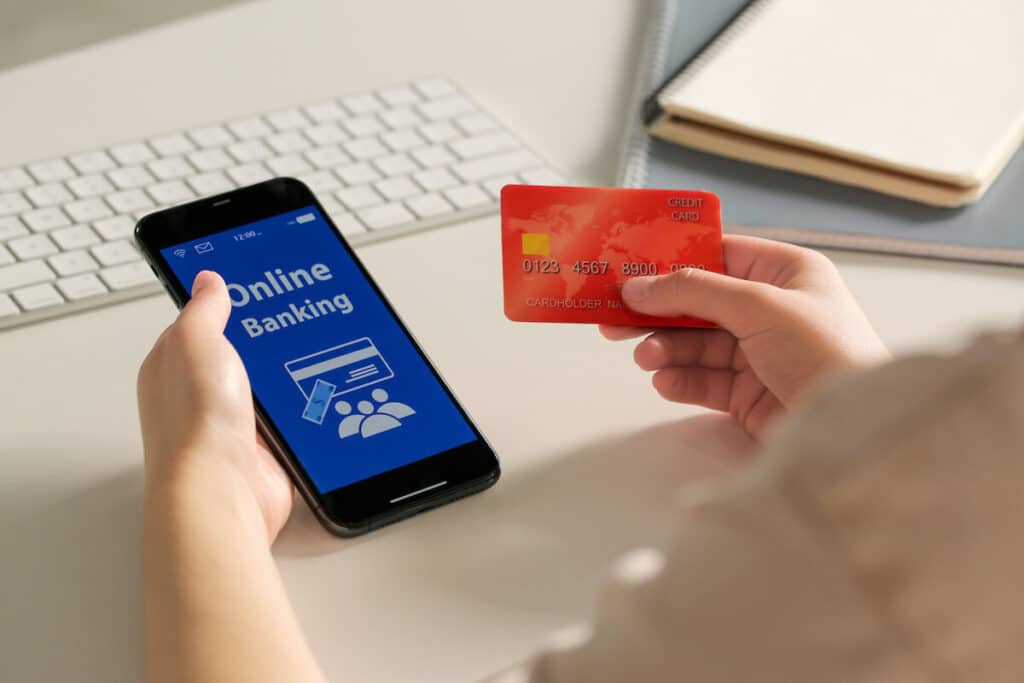What is an EFT payment? It may surprise you to learn that it’s something you already use. An EFT payment is any payment made electronically.
It doesn’t require the payer or the payee to visit a financial institution.
They’re also typically cheaper than paper checks, which is one reason paperless payment methods are popular with financial institutions, corporations, and governments.
If you’re not making a payment with cash, a paper check, or money order, chances are you are making an EFT, also sometimes referred to as an EFT payment.
There are many ways to make electronic payments. Debit and credit cards, wire transfers, electronic checks, and direct deposits are all electronic payment methods.
In short, EFT is a general term to mean any money transfer made electronically.
What are the different types of EFT?

There are several different types of EFTs available. Here are some of the common ones you may use:
- Automated teller machine (ATM) transfers: ATM transactions are a type of EFT. Modern machines can do much more than simply make withdrawals. They can be used to make money transfers between linked accounts, pay bills, and deposit checks.
- Credit and debit cards: Every time you tap your card at a point-of-sale (POS) terminal, you are electronically transferring funds from your account to pay for your goods.
- Electronic checks: If you’re paying a bill online, you may see the option to pay by electronic check. An electronic check, or e-check, works much in the same way as a paper check.
- Direct deposit: Instead of issuing paper checks, a company can pay employees electronically by transferring funds into their accounts through direct deposit. All federal benefits like Social Security are now issued this way.
- Bill pay or direct payment: Many banks include a bill pay feature. You can set up one-time or recurring payments from your checking account to cover your mortgage, car loan, utilities, etc. The bank will handle the transfer for you and pay the bill by the due date.
- Wire transfers: A wire transfer is an electronic money transfer that can be domestic or international. Wire transfers can be done from a bank or from a wire transfer service.
- Money transfer apps: A money transfer made with an app like Remitly is a type of electronic fund transfer. This is true whether funds are sent to a recipient’s bank account, mobile wallet, or to a cash pickup location.
What is the difference between ACH and EFT??
The Automated Clearing House (ACH) is an interbank system that handles electronic transfers from one bank account to another. Transactions that use the ACH network are sometimes called ACH transfers or ACH payments.
So an ACH payment or transfer is a type of EFT.
For example, if your paycheck appears in your bank account every month by direct deposit, that’s a type of EFT and also a type of ACH payment, as it has arrived electronically via the Automated Clearing House network.
In addition to direct deposit, other ACH transactions include bill pay or direct payment and e-checks.
ACH transfers are a popular type of electronic payment. The ACH network processed more than 29 billion payments in 2021.
Is an EFT payment the same as direct deposit?

Direct deposit, which is usually set up as a recurring payment from one bank account to another, is a type of EFT as the money transfer takes place electronically.
Although it’s not true to say all EFT payments are direct deposits, you could say that direct deposit is a type of EFT.
How long do EFT payments take?
This depends on the type of EFT payment you’re using.
Card payments, whether that’s with a debit or credit card, are usually the fastest type of EFT transaction.
On the other hand, a transfer of funds from a bank account in one country directly into a bank account in another country, such as an international wire transfer, could take longer.
ACH transactions fall somewhere in the middle. ACH credits, like direct deposit, may happen anywhere from the same day to within two days, while ACH debits will usually process the same day or the next business day.
If you’re using a money transfer app like Remitly, the processing time will vary depending on multiple factors, including where in the world you want to send your money.
Are electronic fund transfers safe?
An EFT payment is a safe way to transfer money, although no system is 100% secure.
The Federal Reserve Board regulates EFTs under the Electronic Fund Transfer Act (EFTA). This law gives some consumer protection against unauthorized transfers. If there is suspicious activity on your account, report it to your financial institution as soon as possible.
How do I make an EFT?

Setting up an electronic fund transfer is straightforward, but the method depends on what type of EFT you wish to make.
Here’s how it works for ACH transfers, e-checks, credit or debit cards, international wire transfers, and the Remitly app.
Make a payment with an ACH transfer
There are two ways to make an EFT through an ACH payment.
The first method is to log in to your online banking and click on the bill pay option. If you’re paying a person, you’ll need to provide your bank with their name, bank account number, and routing number.
If you’re paying a company, you’ll need to provide the company name and your account number with the company. You’ll also specify the payment amount and when you want the transfer to take place.
Alternatively, you can provide your bank account information to a company you wish to pay, and the payment will be transferred from your account.
Use an e-check
If e-check is listed as one of the payment options for an online payment you wish to make, you will need your bank account number, routing number, and account name.
Make a payment with a credit or debit card
You can use your debit or credit cards to make payments in person, online, or over the phone. Most business owners in the U.S. take card payments, although some will charge a fee for the convenience.
If you’re making a payment over the phone or online, you will be asked for your name, the credit card number, expiration date, and security code, which is the short number located on the signature strip.
Make an international wire transfer
You could use your bank to transfer money to another country. This is called a wire transfer. As with an ACH transfer, you will need to know the name, account number, and routing number for the person you plan to pay.
Wire transfers are convenient, but can be costly.
Use Remitly to send money overseas
A popular way to transfer money internationally is to use an app like Remitly. Download the app and we’ll help you get started today. It’s fast, affordable, and safe.
EFTs: Payment options for the digital age
EFTs are a safe, convenient, and fast way to move money around. Once you know which type is best for your needs, you can save money on regular payments, like sending money home to your family.
